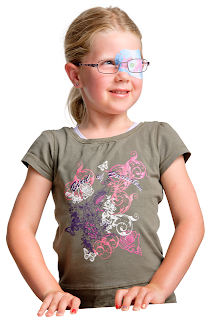Screening
Since there may be no obvious signs to indicate a functional weakness of vision (amblyopia), all children should have an ophthalmic / orthoptic examination on the second year of life in addition to the usual screening examinations. Strabismus is not harmless or just a minor cosmetic defect- it not only causes unilateral visual impairment but also severe impairments of binocular vision. Only early ophthalmological / orthoptic intervention can prevent this happening.
Monday, 26 August 2013
Tuesday, 6 August 2013
My child gets a pair of glasses
After an eye examination at the eye-clinic, the glasses are fitted by an optician or dispensing optician. Children's glasses should be comfortable and fit securely without slipping. They should be large enough to prevent the child from looking over them. Allowing your child to help choose their glasses will aid compliance. After the initial period of getting used to the new glasses, children usually wear them quite happily. One important factor is the parent's positive attitude towards the glasses. The glasses don't weaken the eyes, but help correct an abnormality of the eye (long and short sightedness or astigmatism). They create a clear, sharply –focussed image on the retina of both eyes. Due to the rapid increase in the size of the eyes in the first few years of life, regular check-ups are necessary to ensure that the prescription is still correct. If there has been a change in refraction a new prescription will be issued. After the initial familiarisation phase, visual acuity, eye position and efficacy of the glasses are checked at the eye-clinic. In a small number of cases, the strabismus and functional impairment of vision are remedied by wearing the glasses alone. In many cases, however, additional patch therapy is required.
Subscribe to:
Posts (Atom)

